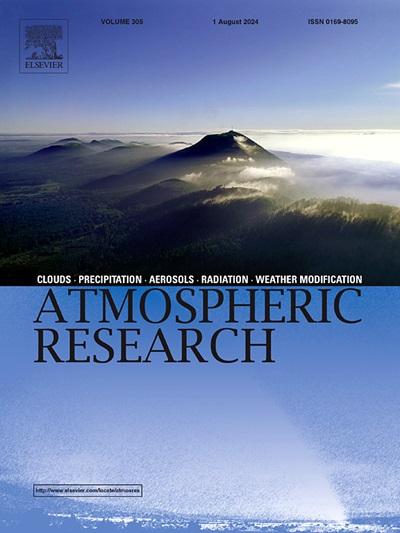A new way to obtain the weighted mean temperature (Tm): Using the Geostationary Interferometric Infrared Sounder (GIIRS) equipped on FengYun Satellite
IF 4.5
2区 地球科学
Q1 METEOROLOGY & ATMOSPHERIC SCIENCES
引用次数: 0
Abstract
Atmospheric weighted mean temperature (Tm) is an important parameter in the Global Navigation Satellite System (GNSS) meteorology, essential for retrieving precipitable water vapor (PWV). The FengYun-4 satellite (FY-4) carries Geostationary Interferometric Infrared Sounder (GIIRS), which realizes the transition from two-dimensional to three-dimensional detection of the vertical structure of the atmosphere in geostationary orbit, providing a more convenient and accurate data source for the inversion of Tm. The study presents a novel approach for deriving the Tm based on the GIIRS products of FengYun-4A satellite (FY-4A) and FengYun-4B satellite (FY-4B). The Tm calculated from the radiosonde data is utilized as reference to assess the performance of FY-4A and FY-4B, which demonstrates that the GIIRS equipped on FY-4 can provide a new way to obtain the Tm. The numerical results show that the mean absolute error (MAE) and root mean square error (RMSE) are 1.65/ 2.06 K and 1.38/ 1.73 K for FY-4A and FY-4B, respectively. The different performance of FY-4A and FY-4B on Tm are also observed from the analysis of the geographical distribution, seasons and epochs. Specifically, the RMSE distribution of FY-4A at different stations ranges from 1.08 to 3.47 K, while the distribution of FY-4B is more concentrated between 1.37 and 2.70 K. The accuracy of FY-4 A deteriorates as increasing latitude, while the phenomenon is not obvious for FY-4B. Moreover, FY-4 A performs slightly better at UTC 0:00 than at UTC 12:00, while FY-4B has a slightly better performance in autumn than in other seasons.
大气加权平均温度(Tm)是全球导航卫星系统(GNSS)气象学中的一个重要参数,对于检索可降水水汽(PWV)至关重要。风云四号卫星(FY-4)搭载了静止轨道干涉红外探测器(GIIRS),实现了静止轨道大气垂直结构从二维探测到三维探测的转变,为Tm的反演提供了更便捷、更准确的数据源。该研究提出了一种基于风云四号 A 卫星(FY-4A)和风云四号 B 卫星(FY-4B)的 GIIRS 产品推导 Tm 的新方法。利用无线电探测仪数据计算出的Tm作为参考,评估了风云四号A卫星和风云四号B卫星的性能,证明了风云四号卫星上配备的GIIRS可以提供一种获取Tm的新方法。数值结果表明,FY-4A 和 FY-4B 的平均绝对误差(MAE)和均方根误差(RMSE)分别为 1.65/ 2.06 K 和 1.38/ 1.73 K。FY-4A 和 FY-4B 在 Tm 上的不同性能还可以从地理分布、季节和历时分析中观察到。具体来说,FY-4A 在不同站点的均方根误差分布范围在 1.08 至 3.47 K 之间,而 FY-4B 则更集中在 1.37 至 2.70 K 之间。此外,FY-4 A 在协调世界时 0:00 的表现略好于协调世界时 12:00,而 FY-4B 在秋季的表现略好于其他季节。
本文章由计算机程序翻译,如有差异,请以英文原文为准。
求助全文
约1分钟内获得全文
求助全文
来源期刊

Atmospheric Research
地学-气象与大气科学
CiteScore
9.40
自引率
10.90%
发文量
460
审稿时长
47 days
期刊介绍:
The journal publishes scientific papers (research papers, review articles, letters and notes) dealing with the part of the atmosphere where meteorological events occur. Attention is given to all processes extending from the earth surface to the tropopause, but special emphasis continues to be devoted to the physics of clouds, mesoscale meteorology and air pollution, i.e. atmospheric aerosols; microphysical processes; cloud dynamics and thermodynamics; numerical simulation, climatology, climate change and weather modification.
 求助内容:
求助内容: 应助结果提醒方式:
应助结果提醒方式:


